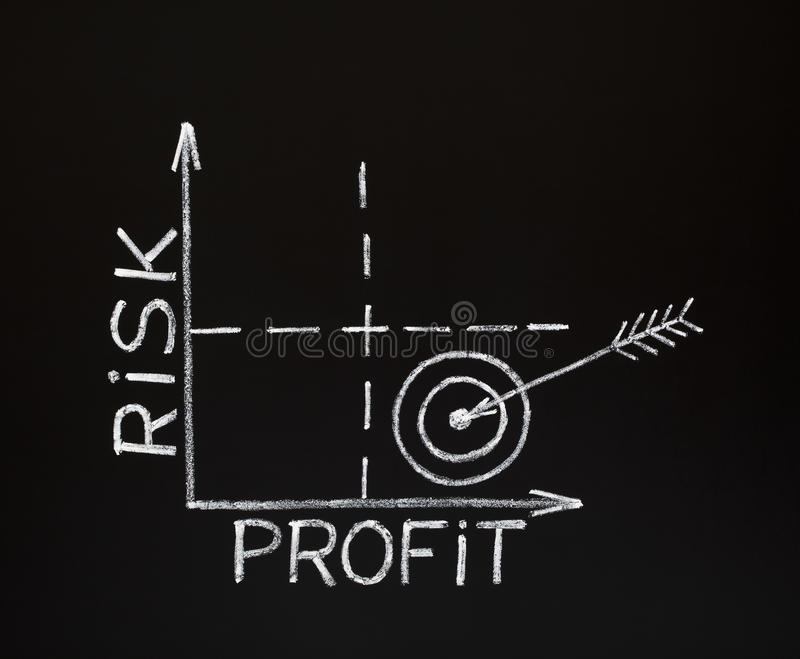Bridging Valuation Gaps with Creative Deal Structures
04 January, 2020Valuation gaps between buyers and sellers are not uncommon; it’s why we have negotiations. Every seller has a number in his head, and it’s very rare that buyers agree with it. The seller is focused on the potential of the business and all the opportunities that lie ahead, while the buyer needs to think about the downside and mitigate their risk. Thus, a gap arises between what the seller expects and what the buyer is willing to pay. But this gap doesn't have to be the end of the relationship.
In our recent M&A webinar, we explored the factors that drive a seller’s valuation expectations, how buyers approach valuations and the risks they seek to mitigate, plus the many creative structures that can be employed to bridge valuation gaps, bring parties together and get deals done.
 Prior to the webinar, we sat down with, Iliya Zogovic, President and CEO of ONEtoONE Corporate Finance Group, to get a glimpse of what attendees could expect to learn about crafting creative deal structures that can effectively bridge valuation gaps.
Prior to the webinar, we sat down with, Iliya Zogovic, President and CEO of ONEtoONE Corporate Finance Group, to get a glimpse of what attendees could expect to learn about crafting creative deal structures that can effectively bridge valuation gaps.
ONEtoONE is a Global Digital Investment Bank specializing in corporate finance advisory services serving the middle market. We were fortunate enough to have Mr. Zogovic share his expertise and vast knowledge in the M&A arena. Here's what we learned…
ShareVault: Valuation gaps between what a buyer can pay, or is willing to pay, and what the seller is willing to accept are commonplace in M&A transactions. Let’s talk about some of the creative ways negotiators can bridge those gaps.
Iliya Zogovic: It’s very rare that business owners and business buyers come to the negotiating table aligned on valuation. Business owners, especially founders or second- or third-generation managers of a family business tend to be very attached to their companies. They often see their firm as their baby or their life’s work. They’ve put in a lot of sweat equity over the years, they see the future potential of the business, and they expect to be compensated handsomely.
What they are often unwilling to acknowledge is that going forward the buyer is assuming most, if not all, of the risk associated with that business. Buyers are generally much more realistic when it comes to a company’s valuation. Where a seller sees the transaction as harvesting the work of their lives, the buyer merely sees an asset on which he needs to get a return for his investors.
So, bridging valuation gaps is really about aligning the two parties. There are a lot of creative mechanisms to do that, but the ones you use often come down to understanding motivations. Is the owner trying to sell the business because he no longer has the time or energy to run it? If there’s no present cash restraint then it might be agreeable that the owner sees his return in the long term. If that’s the case, it’s often possible to get a higher valuation for the seller because there can be lower cash up front and more at the back end when the buyer and seller start to realize the upside together.
On the other hand, the seller may want to completely disengage with the business in order to invest in another venture. In order to do that the seller needs to realize a complete liquidity event of his current business. In those cases, valuation may be diluted based on the higher risk taken on by the buyer. In this type of scenario, it becomes more necessary to get creative with some of the valuation structures available to us.
SV: When a business owner wants to stay involved in the business for a period of time, sometimes valuation gaps can be bridged with an earnout structure. An earnout structure can mitigate risk for the buyer, serve to retain talent, and can be highly motivational for the seller to stay engaged. What are some of the risks and challenges?
 IZ: There are two primary mistakes that are often made when structuring an earnout. The first one I’ve already touched on and that is that entrepreneurs and business owners are often very bullish about their business and they get very excited about the future. As a result, when presenting to the buyer, they paint an amazing scenario, often a scenario they fully believe in. The risk is that earnout milestones will likely be based on the rosy picture they paint. Buyers are usually a little more pragmatic and do more cautious business plans that are a bit more realistic about what can be accomplished in the future. But when negotiating an earnout structure they’ll be perfectly happy to use the seller’s optimistic projections because they know that the chances are good that those numbers are not going to be met. Sellers need to understand that a balance needs to be struck between their optimism and enthusiasm for the future of the business and earnout milestones that are realistic and achievable.
IZ: There are two primary mistakes that are often made when structuring an earnout. The first one I’ve already touched on and that is that entrepreneurs and business owners are often very bullish about their business and they get very excited about the future. As a result, when presenting to the buyer, they paint an amazing scenario, often a scenario they fully believe in. The risk is that earnout milestones will likely be based on the rosy picture they paint. Buyers are usually a little more pragmatic and do more cautious business plans that are a bit more realistic about what can be accomplished in the future. But when negotiating an earnout structure they’ll be perfectly happy to use the seller’s optimistic projections because they know that the chances are good that those numbers are not going to be met. Sellers need to understand that a balance needs to be struck between their optimism and enthusiasm for the future of the business and earnout milestones that are realistic and achievable.
The second danger is the markers or milestones that are used for the earnout. Very often that number is EBITDA, but sellers need to be aware that there are a lot of ways of slicing and dicing that number and the buyer will try to reduce that number as much as possible. Business owners need to be aware of that and define markers that they are able to control. This is especially true if they’re not going to maintain control of the business or if that control hasn’t been adequately defined. If the acquirer is a large entity, the seller may find they have very limited control over EBITDA. They won’t be able to control SG&A. They may have confidence that the business is going to grow tremendously over the earnout period, but they may not be able to control the myriad of things that can get subtracted from EBITDA—things that can make it almost impossible to earn their earnout.
So, to mitigate those two issues it’s important to clearly communicate expectations. Sellers need to be careful to present a good enough picture that excites the buyer, but not so grandiose that it’s unachievable. And, early on in the negotiation process, it’s critical to clearly define EBITDA or whatever other marker might be used. The seller needs to ensure that increasing salaries or aggressively pursuing other acquisitions or increasing inventory is not going to affect EBITDA. All of that needs to be clearly carved out in the beginning and negotiated early in the process.
SV: What about equity retention or equity rollover?
IZ: I would say earnout structures and equity retentions or equity rollovers are equally common and equally used in all sorts of deals. Similar to an earnout structure, equity retention ensures that the owner of the business remains engaged in the business and continues to have a stake in its success.
Sometimes business owners will make the argument that they’ve built the business from the ground up and worked at it for years, but in the transaction, they are only realizing the present value of the business and none of the future value of the business. That gap can be bridged by retaining some equity in the business and allowing them to capture some of that future value. Normally, this will be a minority position, but it should be a strong enough position to ensure that they are motivated to continue engaging with the business and also realizing a profitable exit in the future.
It’s not uncommon, even if the seller retains only 25% of the business after an acquisition, that that equity represents more cash than they initially received at closing.
SV: What other transactional provisions can effectively bridge valuation gaps?
IZ: A lot of the bridging provisions we structure are designed to keep the owners engaged in the business, such as through consulting agreements. These are not common in multi-million dollar deals but are quite common in lower- or mid-market deals.
 This is a great way to bridge valuation because often an owner perceives the sale of their business as a loss of yearly income, so they want to drive up valuation. However, if the deal structure provides a continuing stream of income for the seller, they will continue to be positively engaged in the business and will be much more comfortable with a lower valuation.
This is a great way to bridge valuation because often an owner perceives the sale of their business as a loss of yearly income, so they want to drive up valuation. However, if the deal structure provides a continuing stream of income for the seller, they will continue to be positively engaged in the business and will be much more comfortable with a lower valuation.
Some of these consulting provisions can be very interesting. It’s not just about the amount of time that the seller is going to stay in the business, but it means they continue to have a stake in the success of the business.
For example, they may get rewarded for creating a specified number of new accounts or a specified amount of new revenue. Those can be very valuable structures for bridging gaps in valuation.
SV: Are there some scenarios or corporate situations that preclude the use of some of these bridging provisions?
IZ: Not all of these provisions will be appropriate to all transactions. The name of the game is finding the right provision for each deal and aligning the two parties. It’s more about proceeding on a case-by-case basis and discerning what the best structure is for each deal. It’s not an off-the-rack suit; it’s something that’s more made-to-order.
SV: Are there things sellers can do before negotiations begin to ensure a higher valuation?
 IZ: The most important thing sellers can do is ensure they’re running their business in a professional manner. Having a few years of audited financial statements makes a huge difference. That can help boost value by 10 to 15 percent. Having a succession plan is also beneficial. It’s important to ensure that all of the company’s employees have signed employment agreements and that the agreement contains a provision that accounts for the change of control. Sometimes business owners assume that when they sell their business the management team will be willing to stay on board. If employment agreements don’t contain change of control provisions, the management team may see themselves in a position of power and may attempt to renegotiate terms. That can erode value.
IZ: The most important thing sellers can do is ensure they’re running their business in a professional manner. Having a few years of audited financial statements makes a huge difference. That can help boost value by 10 to 15 percent. Having a succession plan is also beneficial. It’s important to ensure that all of the company’s employees have signed employment agreements and that the agreement contains a provision that accounts for the change of control. Sometimes business owners assume that when they sell their business the management team will be willing to stay on board. If employment agreements don’t contain change of control provisions, the management team may see themselves in a position of power and may attempt to renegotiate terms. That can erode value.
The same thing can happen with facility leases. If your facility leases don’t contain a provision for transferring that lease in the case of a liquidity event then the landlord might see the change in control as an opportunity to renegotiate the lease or raise prices. For the buyer, that contingency directly affects their EBITDA, erodes value and can be a cause to further discount the purchase price.
Making all these provisions pre-deal is very important. When you get down to the last minute you don’t want to give the buyer opportunities to discount value and reduce the purchase price. The reality is until the deal is inked and money has changed hands the valuation is up for grabs and buyers will always try to protect their downside as much as possible.
Start the process early on. You should always run your company as if a buyer is right around the corner. Having all your ducks in a row before you go on the market increases valuation and reduces those last minute surprises that erode value.
SV: How do you recommend that early preparation be best done?
IZ: The best way to realize the optimum value and bridging valuation gaps is having a good team of advisors that walk you through the process. Work with them before, during, and sometimes, after the transaction to ensure everything is in place and there are no surprises.
